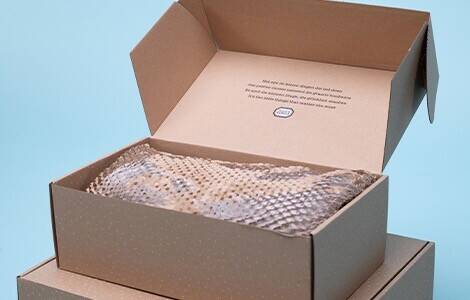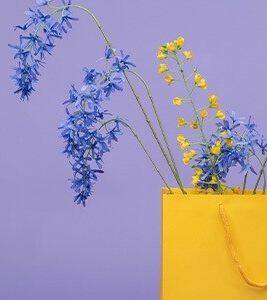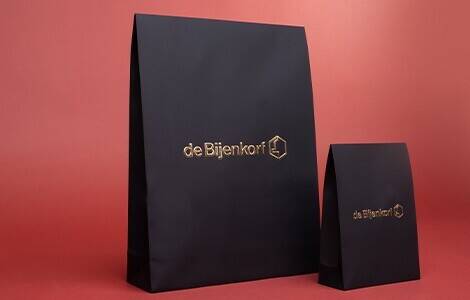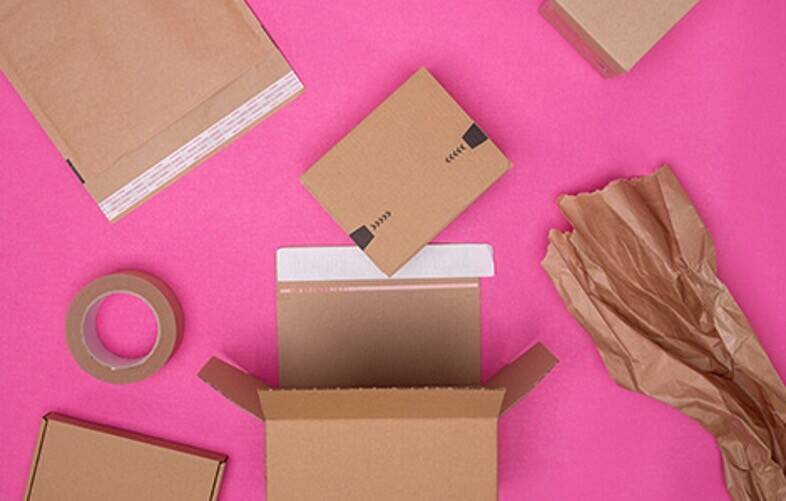Back to mainpage
YURI HUISMAN
Key Account Manager
‘Our packaging solutions prove that sustainability and a distinctive, premium design can go together very well.’
‘We approach every packaging issue from the question of whether and how it can be made more sustainable.’




Sustainable packaging in retail

Quick (win-)wins
Yuri is aware that this is not possible for everyone. Sustainability occasionally comes with a price tag. ‘What you pay for sustainability naturally depends largely on your wishes and requirements. Fortunately, there are also many examples of how you can actually save money with more sustainable packaging. It pays to take a critical look at your packaging and what you use it for. We often see customers unnecessarily using a heavier quality or choosing a bag with a block bottom, despite it not being necessary at all. Material savings are then quickly achieved, as are cost savings. It’s a win-win. Developments in materials also continue to progress. Materials are becoming increasingly thinner without compromising on load-bearing capacity, and they increasingly contain more and more recycled material.’
Reusable packaging
‘Of course, our reusable solutions cannot be missing from this list,’ Yuri continues. ‘We developed a reusable shopper for De Bijenkorf made from recycled plastic that has the look and feel of a luxurious fabric. We developed reusable decorations for a perfumery chain in the shape of a charm to act as an alternative to the ribbon and bow. The consumer can wear the charm as jewellery. We are proud of our ability to create these kinds of solutions with our customers.’
Sustainable storage materials
As an example, Yuri mentions paper carrier bags with handles made of luxurious twisted paper. This makes it look and feel like cotton, but the luxury bag is still made of one type of material. ‘This was spotted by our employees in Purchasing and already successfully put into use by various customers. You have the luxurious look of a cord, but made of paper. The entire bag can be recycled with normal waste paper as it is completely recyclable due to the use of mono-material. In this context, we also see innovative closures for gift boxes that make plastic, paper tape and, for example, magnets redundant. Furthermore, there are now sustainable glitters made from minerals instead of plastic. We apply finishing techniques that make the use of ink or laminates redundant. Examples of this are embossing and water-based varnishes, which give the packaging a beautiful relief or other feel.’
Incorrect perception and conflicting interests
‘I think we can meet every sustainable packaging demand,’ says Yuri. ‘It’s not rocket science for us. We have the knowledge and experience of sustainable packaging. It is usually the surrounding factors that make it complex. It is often the image that gets in the way. For instance, if something comes from China, it is assumed to always be ‘bad’ for the environment because of the distance. Just like the perception that cardboard is always ‘better’ than plastic. The wishes or requirements of the customer’s marketing and CSR department can sometimes differ. Luckily, we always have a solution to satisfy everyone. Our packaging solutions prove that sustainability and a distinctive, premium design can go together very well.’
Demonstrably sustainable
Large European companies have been required to report on their sustainability policies since 2024. ‘In collaboration with The LCA Centre, we help customers demonstrably make their packaging range more sustainable. We have also developed an assortment classification that we use to assess packaging for its level of sustainability based on such factors as recyclability, recycled material and certifications. This is how we help customers make more sustainable choices.’
Sustainable packaging forerunner
‘We want to be Europe’s sustainable packaging forerunner,’ says Yuri. quoting Paardekooper’s ambition. ‘We cannot achieve this alone, we can only do so by working together with our customers and suppliers. We have been working with some customers to make their packaging range more sustainable for more than 15 years. The road to sustainability is a continuous process coming from changing legislation, material innovations, new insights and techniques. It is our job to inform customers as best as possible.’
Yuri has been working as a Key Account Manager at Paardekooper for 32 years. He was there when Paardekooper was the first packaging company to use an LCA to calculate the environmental impact of packaging about 15 years ago. It took a while for this new perspective to ‘land’, but nowadays it is part of Yuri’s daily routine: ‘We approach every packaging issue from the question of whether and how it can be made more sustainable.’
Our assortment classification is widely applied to different customers and customer segments. Our colleague, Yuri Huisman, will be happy to tell you how the range layout classification works to the customer’s advantage
